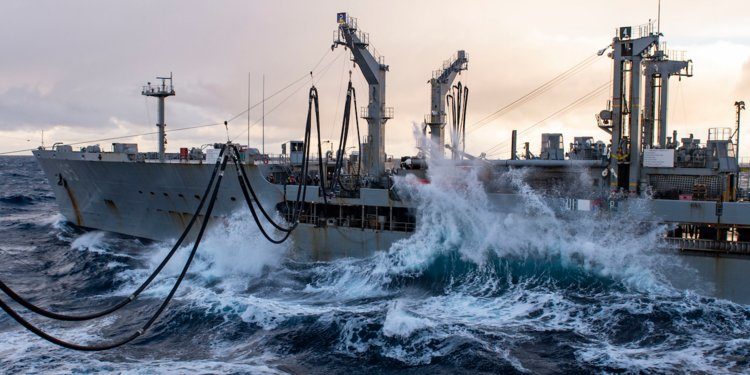
Trident Juncture is a regularly scheduled exercise, and this year's version was meant to test the alliance's ability to respond collectively to a threat - in this case an attack on Norway - and the logistical muscles needed to move some 50,000 troops, thousands of vehicles, and dozens of ships and aircraft on short notice.
Trident Juncture also saw the first time a US aircraft carrier, the USS Harry S. Truman, sailed above the Arctic Circle since the early 1990s. The Truman strike group was joined by the USS Iwo Jima expeditionary strike group.
Working in the harsh conditions found in the northern latitudes in autumn was also part of the plan, said US Navy Adm. James Foggo, who commands US naval forces in Europe and Africa and was in charge of Trident Juncture.
"One of the things that we took advantage of was the opportunity to do this in October and November," Foggo said on the most recent episode of his podcast, "On the Horizon."
"When I was in the States [prior to the exercise], people asked me, 'Hey, why'd you do this in October and November? It's pretty nasty and cold in the high north at that time of year,'" Foggo said. "That's exactly why. We wanted to stress the force, and we truly did get some lessons learned out of this."
After nearly two decades operating in the Middle East, focusing on smaller-scale operations like counterinsurgency and counterterrorism, the US military has started to shift its focus back toward operating against sophisticated, heavily armed opponents and in harsh conditions.
US Marines have been in Norway conducting such training since early 2017. During exercise Arctic Edge in February and March, more than 1,500 US soldiers, sailors, airmen, and Marines gathered in Alaska "to train ... to fight and win in the Arctic," the head of Alaskan Command said at the time.
What these troops are learning isn't necessarily new, but it is needed, according to Vice Adm. Andrew Lewis, who took command of the US Navy's 2nd Fleet in August.
"I think most of what we are gathering from lessons in [Trident Juncture], I think we kind of knew, because we're getting back into a geographic space in a time of year, and we haven't been operating that way for a long, long time," Lewis said during an event at the Center for Strategic and International Studies on November 28.
"We've been operating in the Persian Gulf, where it's like a lake, and it's really hot, whereas now we're operating up off the coast of Norway, where it's blowing a gale, the decks are moving around, the ships are getting beat up, and the people are getting beat up," Lewis added.
"We're not used to being out on the flight deck for long periods of time where it's really cold," said Lewis, a career pilot.
Second Fleet was reactivated in May, seven years after being shut down as part of a cost-saving and restructuring effort. Now back in action, the fleet will oversee ships and aircraft in the western and northern Atlantic Ocean.
Soviet and NATO forces were active in those areas during the Cold War, especially the Greenland-Iceland-UK Gap, which was a chokepoint for ships traveling between the Atlantic Ocean and the Arctic.
The fleet's reactivation was part of an effort to prepare for a potential conflict with a rival "great power," like Russia or China.
Comment: Something NATO's neocon warhawks have been salivating over for quite some time:
- The ulterior reasons behind the Anglo-American war on Russia
- Why NATO is wasting money in preparation for a Russian attack on Norway
- NATO and Germany build up forces for war against Russia
- The US's war on Russia: A progress report
As Lewis noted, returning to the high north didn't go off without a hitch. Even before the live portion of the exercise began, four US soldiers were injured when their vehicles collided and one slid off a road in Norway.
The amphibious dock landing ship USS Gunston Hall and amphibious transport dock ship USS New York, both of which were taking US Marines to the exercise, also had to return to Iceland days before the official start because of rough seas, which damaged the Gunston Hall and injured some of its sailors.
Gunston Hall underwent repairs in Iceland and departed on November 5.
Discussing the effects of rough weather on the exercise, Foggo said NATO forces would "look for operational risk management first," and a spokeswoman for the Truman strike group told Business Insider that the group took steps to prepare for "colder temperatures, higher winds, and unpredictable seas."
US personnel will need more preparation in order to operate effectively in that part of the world, Lewis said.
"Our kids, they adapt really quickly, but not without repeat efforts," he said. "I think most of it's been ... those kind of lessons, and I think overall we did pretty well, but we can do better."



Comment: And NATO's Nordic partners didn't fare so well either: